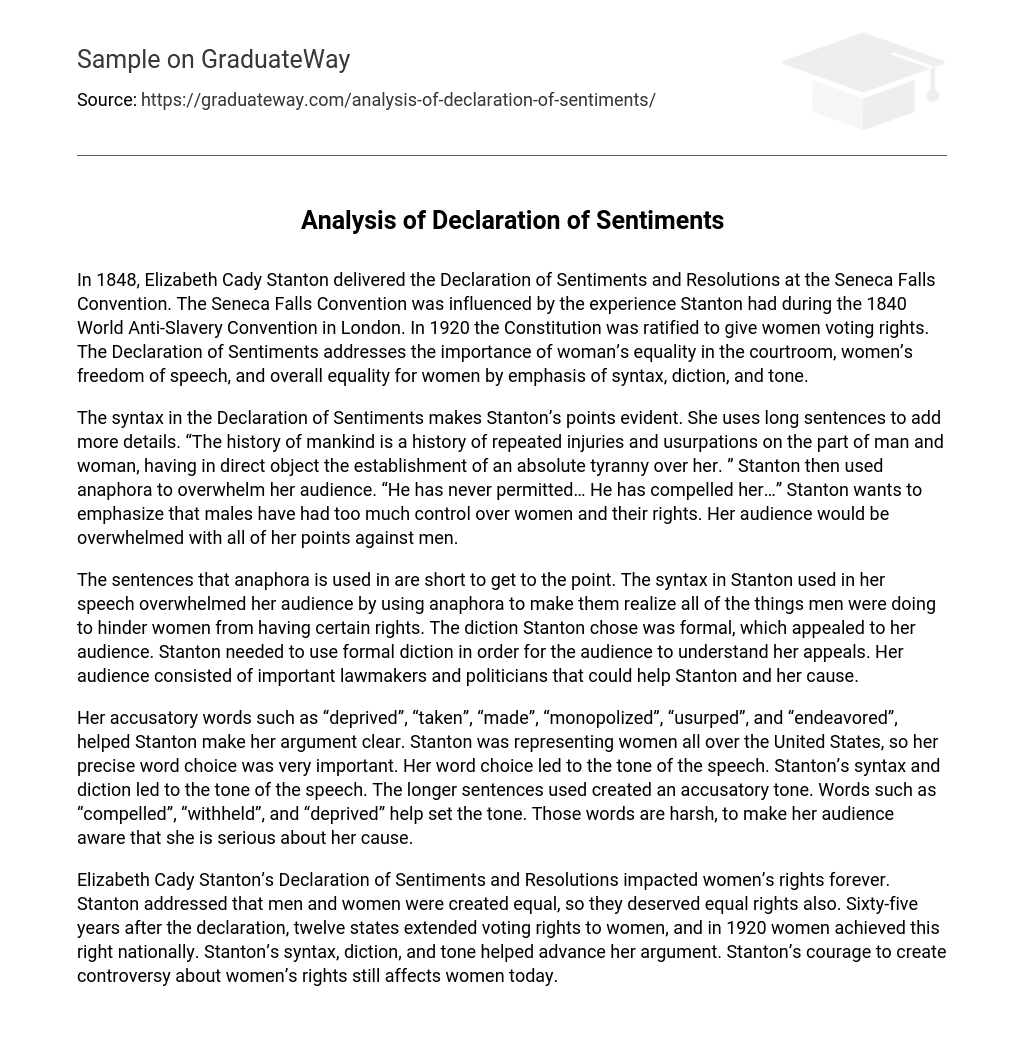In 1848, Elizabeth Cady Stanton delivered the Declaration of Sentiments and Resolutions at the Seneca Falls Convention. The Seneca Falls Convention was influenced by the experience Stanton had during the 1840 World Anti-Slavery Convention in London. In 1920 the Constitution was ratified to give women voting rights. The Declaration of Sentiments addresses the importance of woman’s equality in the courtroom, women’s freedom of speech, and overall equality for women by emphasis of syntax, diction, and tone.
The syntax in the Declaration of Sentiments makes Stanton’s points evident. She uses long sentences to add more details. “The history of mankind is a history of repeated injuries and usurpations on the part of man and woman, having in direct object the establishment of an absolute tyranny over her. ” Stanton then used anaphora to overwhelm her audience. “He has never permitted… He has compelled her…” Stanton wants to emphasize that males have had too much control over women and their rights. Her audience would be overwhelmed with all of her points against men.
The sentences that anaphora is used in are short to get to the point. The syntax in Stanton used in her speech overwhelmed her audience by using anaphora to make them realize all of the things men were doing to hinder women from having certain rights. The diction Stanton chose was formal, which appealed to her audience. Stanton needed to use formal diction in order for the audience to understand her appeals. Her audience consisted of important lawmakers and politicians that could help Stanton and her cause.
Her accusatory words such as “deprived”, “taken”, “made”, “monopolized”, “usurped”, and “endeavored”, helped Stanton make her argument clear. Stanton was representing women all over the United States, so her precise word choice was very important. Her word choice led to the tone of the speech. Stanton’s syntax and diction led to the tone of the speech. The longer sentences used created an accusatory tone. Words such as “compelled”, “withheld”, and “deprived” help set the tone. Those words are harsh, to make her audience aware that she is serious about her cause.
Elizabeth Cady Stanton’s Declaration of Sentiments and Resolutions impacted women’s rights forever. Stanton addressed that men and women were created equal, so they deserved equal rights also. Sixty-five years after the declaration, twelve states extended voting rights to women, and in 1920 women achieved this right nationally. Stanton’s syntax, diction, and tone helped advance her argument. Stanton’s courage to create controversy about women’s rights still affects women today.





